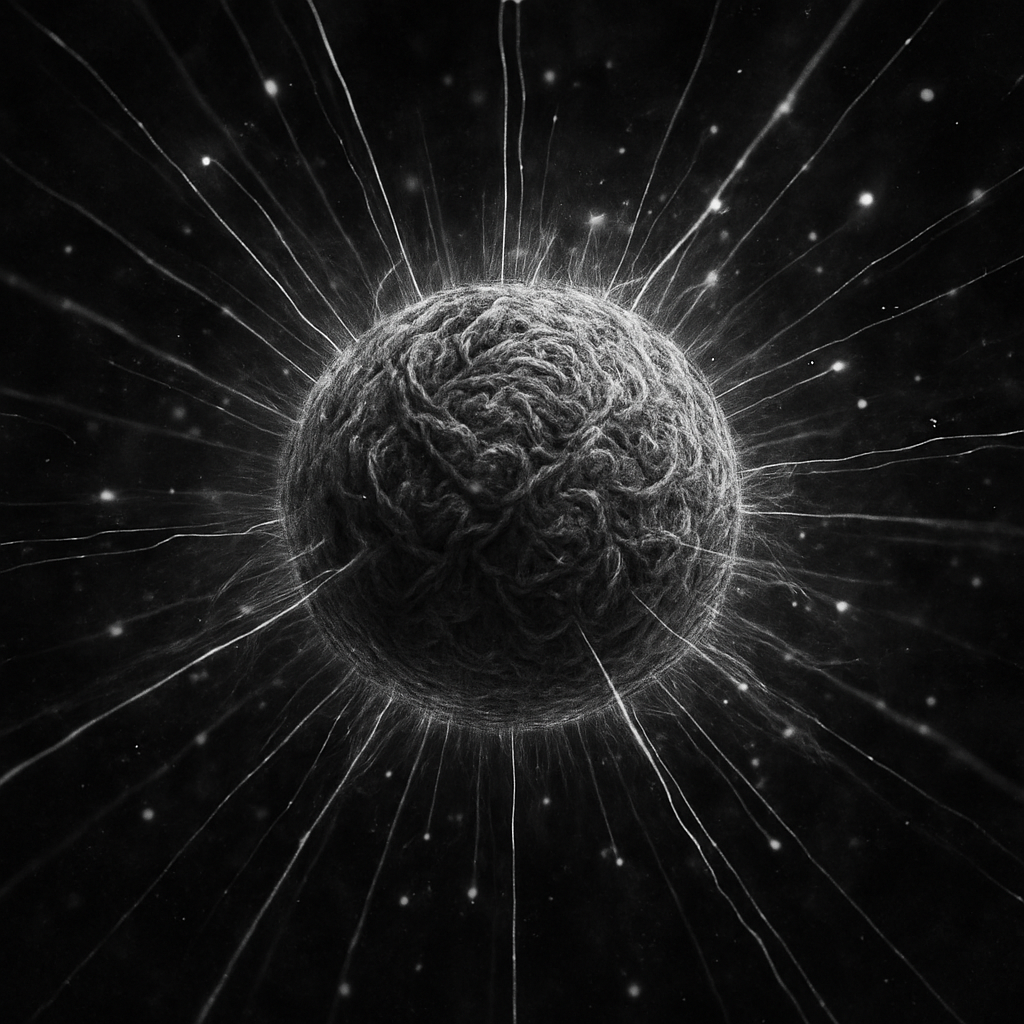
The Standard Model: the unifying theory describing all the forces in the Universe had a hole in it. But Peter Higgs and François Englert deserved the Nobel Prize for the discovery of the missing piece: the Higgs boson. And this thanks to the world’s largest accelerator.
Once upon a time, there was a universe full of mysteries, where even the fundamental forces – electricity, magnetism, weak and strong nuclear forces, gravity – were a bit like those people you’ve known forever but can never quite understand. Scientists, who are curious types by nature, wondered at one point: “But what on earth gives mass to elementary particles?”
From this simple yet insidious question, like a mosquito on a summer’s night, began one of the most fascinating scientific adventures of our time. The goal? The discovery of the Higgs boson, a particle that would prove fundamental in completing the puzzle of the Standard Model of physics.
The Standard Model: an almost perfect puzzle
In the 1960s, physicists had begun to put together the pieces of a theory that was supposed to explain all the fundamental forces in the universe. Not quite all of them – all except gravity, which evidently is the force that no one ever manages to invite to the party. This endeavour gave birth to the Standard Model: a theory so brilliant that it seemed the result of a high alcoholic weekend between Einstein, Feynman and their most creative friends. The Standard Model described very well three of the four fundamental forces (electromagnetism, weak nuclear force and strong nuclear force) and the elementary particles that mediate them.
Yet, there was a hole. And not just any hole, but a hole as big as the national debt: how could particles have mass? A tiny thing that threatened to bring down the whole house of cards built by physicists up to that point.
Higgs’ intuition and how to fill a hole (a theoretical hole)
This is where Peter Higgs, a British physicist who, in 1964, had the right intuition at the right time, came into the picture. In a stroke of genius that only a physicist can have (or perhaps after a glass of particularly strong stuff), Higgs proposed the existence of an invisible field that pervades the entire universe: the Higgs field. According to his theory, elementary particles interact with this field and thereby acquire mass. The stronger the interaction, the heavier the particles become.
To cut a long story short, imagine the Higgs field as a dance floor: some particles dance gracefully like feathers, others drag along as if they were size 6XL and had two left feet. Their mass depends on how heavily they move around the dance floor. But how to prove the existence of this field? The answer lay in a particle, the Higgs boson, a kind of ticket to the dance.
The hunt for the boson: particle accelerators in action
To capture the Higgs boson, an ingenious plan was needed: particle accelerators powerful enough to produce extreme conditions. In the 1980s and 1990s, scientists built ever larger and more powerful accelerators. But finding the Higgs boson turned out to be like looking for a needle in a giant haystack.
It became clear that something more powerful was needed. And so, in 2008, CERN (which is a bit like Disneyland for physicists) switched on the Large Hadron Collider (LHC), a 27-kilometre-long underground ring capable of colliding elementary particles at close to the speed of light. If that were not enough, the temperature of the loop was 1.9 °K: colder than the cold of deep space; perhaps the coldest place in the Universe. If there was one place where the Higgs boson could finally show itself, it was there.
LHC: international collaboration works wonders
The LHC project is the result of an unprecedented international scientific collaboration. Think of a group of people who, instead of arguing about who pays for the drinks, decide to join forces to build a particle accelerator bigger than the world has ever seen. To build the LHC, it took years of work, contributions from every corner of the planet and billions of euros. And, surprisingly, no one ever argued about who should push the start button.
On 10 September 2008, the LHC was switched on, and the hunt for the Higgs boson began in earnest. Scientists stood there, wide-eyed as children on Christmas morning, hoping to find the longed-for boson under the tree. But, as with any good treasure hunt, it took years of work, patience and a good dose of … luck.
The big day
4 July 2012 is a date that physicists will always remember. On that day, CERN announced that it had found a new particle, one that looked just like the Higgs boson. It was as if a giant champagne cork had finally popped: tears, hugs and probably even a few toasts were the order of the day.
The Higgs boson was no longer just a theory; it had been scientifically proven: it was a reality. The scientific community rejoiced; and Peter Higgs, who until then was a relatively unknown physicist, became a rock star of science. Data from the LHC’s ATLAS and CMS experiments had confirmed that the new particle had all the characteristics expected of the Higgs boson, thus completing the Standard Model and putting the icing on a cake that had been baking for almost 50 years.
The importance of discovery and technological spin-offs
But why all this fuss over a particle? The Higgs boson is fundamental because it is the key that gives mass to all other elementary particles. Without it, the universe as we know it would not exist: there would be no atoms, planets, stars and not even us. In other words, the Higgs boson is the glue that holds matter together. Not bad for a particle that until a few years ago was just an idea.
In addition to solving a fundamental mystery of physics, the discovery of the Higgs boson has brought with it a number of technological spin-offs. The tools developed to detect such elusive particles have also been used in medicine, improving imaging techniques and the ability to diagnose and treat complex diseases. And then, all the computer technology developed to handle the huge amounts of data generated by the experiments at the LHC has given an incredible boost to fields such as machine learning, big data management and, yes: even the birth of artificial intelligence.
The Nobel Prize to Peter Higgs and François Englert
A few months pass – spent in further verifications to make sure everything fits – and already in 2013 comes the triumph for Peter Higgs and François Englert: almost half a century after their theoretical prediction, their contribution is recognised with the Nobel Prize in Physics. It was the crowning achievement of a lifetime of work dedicated to understanding the mysteries of the universe. François Englert, together with his collaborator Robert Brout, had proposed a mechanism similar to Higgs’ in the same year, independently. But it was Higgs’ theory that became the key, paving the way for the experiment that would confirm the existence of the Higgs boson. With the Nobel Prize, the scientific community celebrated not only an extraordinary discovery, but also the perseverance and ingenuity of two men (or rather: two great research teams) who challenged the frontiers of knowledge.
Scientific progress and ethical dilemmas
Of course, not everything has been sunshine and roses. The discovery of the Higgs boson has also brought with it a debate on the costs and risks associated with frontier scientific research. Spending billions to search for an invisible particle – but one that has never hurt anyone – might seem a bit extravagant, especially when there are pressing global problems such as poverty and disease. Moreover, every major scientific discovery also raises ethical questions: are we prepared to face the consequences of our findings? Could the knowledge gained be used in harmful ways?
But if history has taught us one thing, it is that basic research, even research that is seemingly far removed from practical applications, is fundamental to human progress. Without discoveries like those made possible by the LHC, many of the technologies we take for granted today would not exist. It is an investment in the future, even if sometimes the fruits are not seen until much later.
A discovery built on the shoulders of giants
The discovery of the Higgs boson is the result of the work of thousands of scientists, engineers and technicians from all over the world who have been collaborating for decades. Each team added a piece to the puzzle, building on what others had already done. It is like a great team game, where everyone played their part to arrive at the final victory.
And in a world where global challenges are increasingly complex, this international scientific collaboration reminds us that working together is the only way to tackle problems that no one can solve alone. After all, if the Higgs boson has taught us anything, it is that to do great things, it is not enough to be smart: you also have to be a little (OK, let’s face it: a lot) stubborn and, above all, willing to collaborate. And, who knows, maybe one day we can solve even the most complex mysteries of the universe. Together.
















